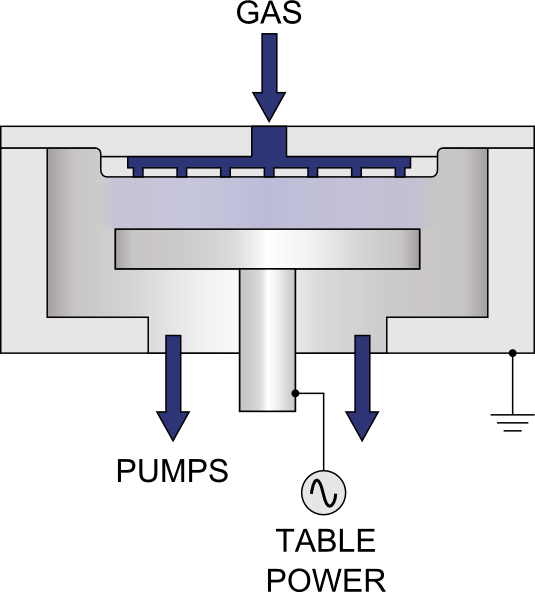 Part of the Oxford Instruments Group
Part of the Oxford Instruments Group
Expand
Collapse
Reactive Ion Etching (or RIE) is a simple operation and an economical solution for general plasma etching. A single RF plasma source determines both ion density and energy.
Our RIE modules deliver anisotropic dry etching for
an extensive range of processes.

Multiple choices of etch processes:
RIE features:
A wide range of materials can be etched, including:
| PlasmaPro 80 |
PlasmaPro 100 |
PlasmaPro 800 | ||
| Electrode size | 240mm | 240mm | 460mm | |
| Loading | Open load | Load locked or cassette | Open load | |
| Substrates | Up to 240mm |
200mm with carriers options available for multi-wafers or small pieces | Up to 460mm | |
| MFC controlled gaslines | 8 or 12 line gas box available | |||
| Wafer stage temperature range | -150°C to 400°C |
-150°C to 400°C | 10°C to 80°C | |
| He Back side cooling option | Yes | Yes | No | |
| ICP Option | Yes | Yes | No | |
| Focused Plasma | Yes | No | Yes | |
We had the honour to discuss with Dr Oscar Kennedy, UCLQ Postdoctoral Fellow, and Dr Wing Ng, Senior Research Fellow, from University College London (UCL) about their latest research projects and how they use our PlasmaPro® 80 RIE system.
Dr Oscar Kennedy has used PlasmaPro RIE system to create superconducting circuit by etching the superconducting NbN film, whereas Dr Wing Ng has used the RIE system to accurately pattern a 50 nm gap with smooth sidewalls between a pair of waveguides for chip‑based optical buffers. Read the case study to learn more.